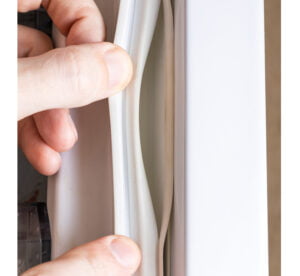
Guaranteed Safe & Secure Checkout
Want free delivery? Add £200 more.
 The Benefits Of A Door Seal
The Benefits Of A Door SealDoors seals are a great solution to seal the door in question and can offer many benefits.
Draught and weather proofing being one of them, as the door seal can actually improve the energy efficiency of your home or office. This is because the door seal closes the gap meaning the door will not suffer from draughts and will result in you being able to keep your costs low.
A door seal can also offer acoustic protection, as the door has been sealed off. If you live in a shared house or building, then acoustic rated seals can be ideal to minimise the sound transmission between areas. For anyone looking to provide private spaces, such as doctors surgeries or meeting rooms within an office, then an acoustic door seal can ensure the privacy of conversations that take place inside.
There are also intumescent door seals which can provide fire protection to a timber or metal door. When the door is exposed to extreme heat the graphite or mono-ammonium phosphate door seal expands to close any gaps or edges that might facilitate the spread of smoke and fire. Some intumescent door seals also provide smoke protection, which can be vital in preventing deadly smoke progressing to other parts of the building.
Depending on the application, the door seal can just be applied with self adhesive backing usually supplied with the product. However, some seals need the door to be routed which can be achieved with a router cutter.
How to install a door seal? A door seal can be installed by simply removing the adhesive backing and firmly placing it on the surface. Typically this can take up to 24 hours for the adhesive to properly dry/cure. Some applications require the door seal to be routed into the door.
Browse our range of door seals, which includes architectural seals, joinery door seals and threshold seals.